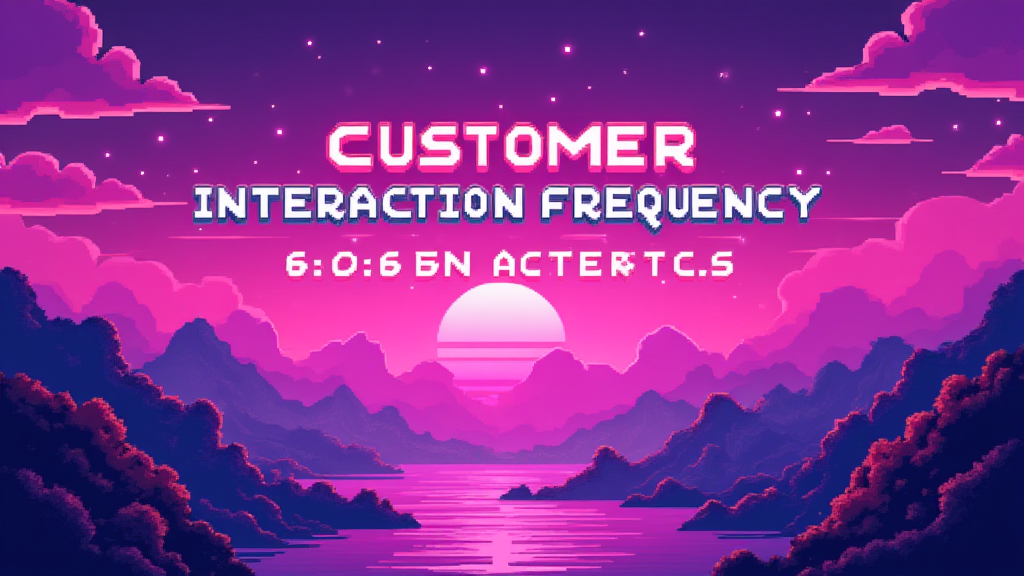Customer Interaction Frequency: Boosting Engagement

Published on: October 01, 2024
Customer Interaction Frequency refers to the rate at which a company engages with its customers through various touchpoints. This metric is crucial for Sales, Marketing, and Revenue Operations teams as it directly impacts customer relationships, satisfaction, and ultimately, business growth. 📊
Why Customer Interaction Frequency Matters
Regular interactions with customers can lead to:
- Improved customer retention rates
- Increased brand loyalty
- Higher customer lifetime value (CLV)
- More opportunities for upselling and cross-selling
- Better understanding of customer needs and preferences
Optimizing Customer Interaction Frequency
Finding the right balance in interaction frequency is crucial. Too few interactions may lead to customer disengagement, while too many can be perceived as intrusive. Consider these factors:
1. Customer Preferences 🎯
Different customers have varying preferences for interaction frequency. Use data analytics and customer feedback to tailor your approach.
2. Interaction Quality 🌟
Focus on meaningful interactions that provide value to the customer, rather than simply increasing the number of touchpoints.
3. Multi-Channel Approach 📱💻📞
Utilize various communication channels to reach customers where they are most comfortable, such as email, social media, phone calls, or in-person meetings.
Measuring Customer Interaction Frequency
To effectively track and optimize your customer interaction frequency, consider these metrics:
| Metric | Description |
|---|---|
| Average Interactions per Customer | Total interactions / Number of customers |
| Interaction Frequency by Channel | Number of interactions per channel over a given period |
| Customer Satisfaction Score (CSAT) | Measure of customer satisfaction with interactions |
| Net Promoter Score (NPS) | Likelihood of customers recommending your business |
Challenges in Managing Customer Interaction Frequency
While optimizing customer interaction frequency can yield significant benefits, it also comes with challenges:
- Data Silos: Information scattered across different departments can hinder a unified view of customer interactions.
- Personalization at Scale: Tailoring interaction frequency for each customer can be resource-intensive.
- Balancing Automation and Human Touch: Finding the right mix of automated and personalized interactions is crucial.
Best Practices for Improving Customer Interaction Frequency
- Implement a robust Customer Relationship Management (CRM) system
- Develop a customer segmentation strategy
- Create a content calendar for regular, valuable communications
- Train your team on effective customer interaction techniques
- Regularly analyze and adjust your interaction strategy based on data insights
By focusing on optimizing your Customer Interaction Frequency, you can build stronger relationships with your customers and drive business growth. 🚀
Questions to Consider
As you implement Customer Interaction Frequency strategies in your Sales or Marketing stack, ask yourself:
- How can we better track and analyze our customer interactions across all channels?
- What tools or technologies can help us personalize our interaction frequency for different customer segments?
- How can we ensure that each interaction adds value to the customer experience?
- What metrics should we prioritize to measure the effectiveness of our customer interaction strategy?

















